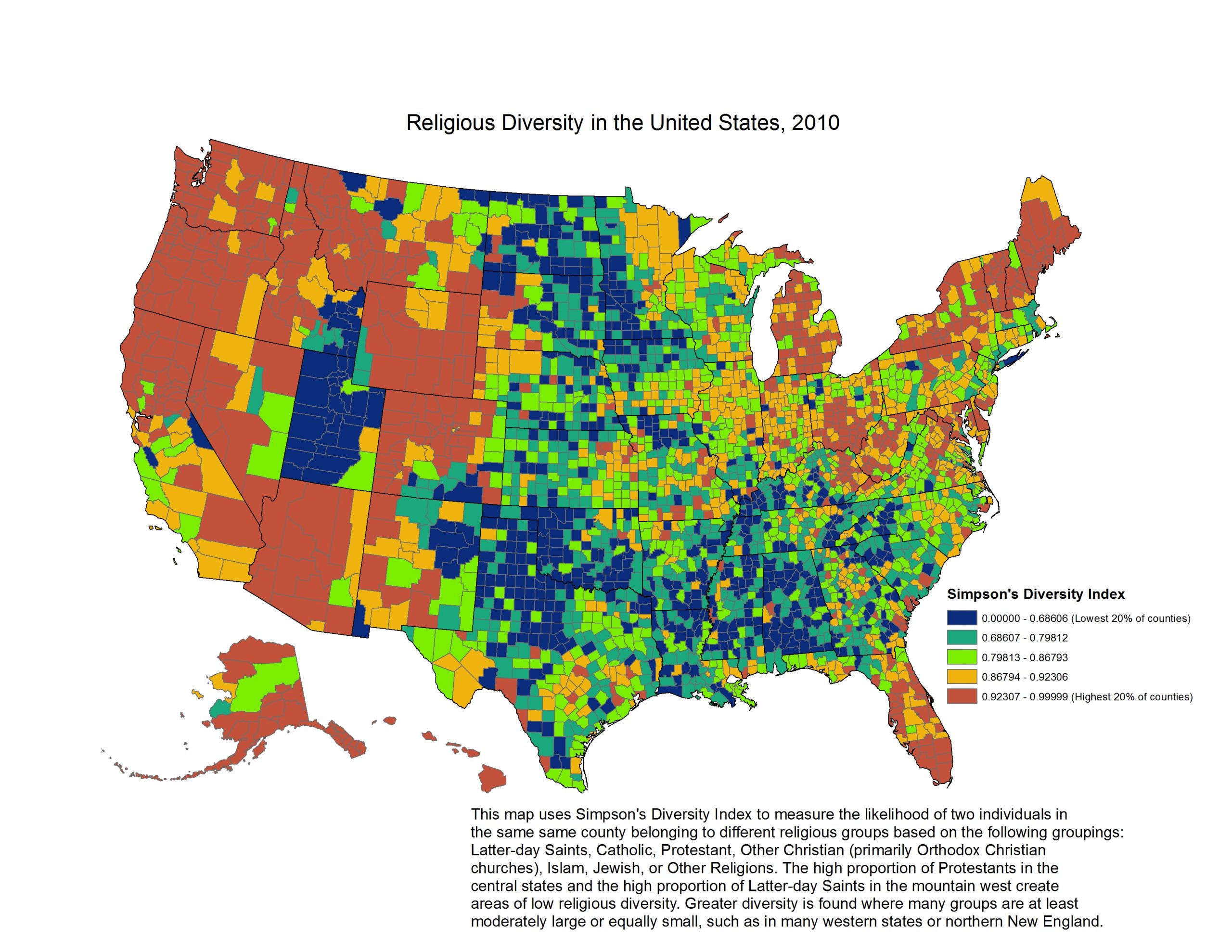18 Geography of Religion
Christine Rosenfeld and Nathan Burtch
Religion and geography
Religion plays a strong role in the culture of believers, shaping values, actions, food, and even dress. A religion is a system of beliefs and practices that recognize a higher power beyond humanity. Religions commonly have varying rituals. Prominently there are often rituals revolving around life changes recognized as important to the religious community, such as birth, coming-of-age, marriage, and death. While culture also has secular, or non-spiritual, rituals at these life moments, many religious traditions have specific rituals such as baptisms and bar mitzvahs along with traditional religious practices of marriage and death. Additional rituals, beliefs, and practices surround holidays (or, Holy days).
Religion, like any other cultural practice, can readily be assessed from a geographic lens. Geographers study the spatial distribution of organized religious systems, specific religious practices, and the impact of religion on the landscapes of culture and institutions. Religion tends to have a patchwork nature; individual belief and practice is quite nuanced and intrinsic. At a global scale, it is difficult to view specific practices, but geographers can categorize and look at major religious trends. Major religions are those that share basic tenets of faith among believers, even if there exists wide sectarian differences within these faith families. Generally, five major world religions are identified:
- Hinduism
- Buddhism
- Judaism
- Christianity
- Islam
Like other cultural practices, major religions started in hearth areas of origin and have spread over time. Beyond these five, Taoic and Animistic religions are looser categories but still are important as belief systems.
Exercise: Religions around the World
This interactive map shows prevailing religions around the world along with country-based breakdowns by major religious group.
In looking at beliefs and practices of religion, there are several ways to further categorize religions. How many gods do adherents believe in? Monotheistic religions have a belief in only one God, while polytheistic religions have many gods. Does the religion proselytize, or seek new converts to the faith? Ethnic religions are those that do not proselytize and are associated with a specific place or ethnic group, while universalizing religions breaks from bounds of place and ethnicity to seek converts. How “pure” is the faith of the religion, or more likely the sect or denomination? Syncretism is the melding of various religious traditions and systems in to one, while orthodoxy is a specific emphasis on purity of faith within a sect.
These and other religions have diffused geographically through three major methods. First, adherents have migrated to new places, bringing religious practices with them. Second, religion has spread through contact conversion, which is similar to the concept of expansion diffusion. Third, religion has spread through the use of organized missions. This is similar to the concept of relocation diffusion.
The religious landscape of the United States

Before European colonization of the Americas, there were myriad indigenous religions practiced by Native Americans. The colonists brought various forms of Christianity to the Americas. Christian denominations were not randomly distributed, but rather clustered along denominational lines in certain colonies or regions. In the New England colonies, Congregationalists were most prominent. Southern colonists were largely Anglican (or Episcopalian as it became known after the American Revolution). The colony of Maryland was chartered for Catholics. As more people migrated and more churches were founded, these early patterns of regional domination by particular sects changed. Three major changes caused this diffusion and confusion of American religion:
- American-style freedom, which encouraged experimentation of spiritual matters and departure from establishment churches
- Westward expansion, where new and eclectic worship practices developed in the vacuum of established churches
- Immigration, as new migrants to the United States held on to the security of their homeland’s religious practice

As a result, there are few counties in the United States that have a single, dominant religion. The map above shows the religious diversity in the United States by county. However, there are four general ‘dominant’ or pluralistic regional religions in America, as seen in the map on the right.
- Mormonism around Utah and southern Idaho
- Baptist in the South
- Lutheranism in the Upper Midwest
- Catholicism in the Northeast and the West
The Catholic patterns themselves come from two different patterns of migration. Those mostly urban strongholds in the Northeast were started from European Catholic migration of Ireland, Italy, and other European countries. The West is largely influenced from Hispanic or Latinx immigration.
Some scholars of religion have posited that the United States, in addition to being religiously pluralistic, also possesses a civil religion. Put forward by Robert Bellah, a civil or civic religion recognizes an implicit religion practiced by members of a nation. As described at the beginning of this chapter, religions often have associated rituals, symbols, and practices associated with adherents. The argument for the existence of an American civil religion is that many Americans are connected by civic culture that works in a quasi-religious manner. American culture celebrates sacred documents like the Constitution, sacred times like the Fourth of July, and sacred places like Arlington Cemetery, and these cultural artifacts are not dissimilar from, for example, how Catholics may treat the Bible, Christmas, and the Vatican.
Questions about American Civil Religion video
The video above outlines several arguments about the theory of existence for an American civil religion. What do you think?
- What are three arguments for there being an American civil religion?
- What are three arguments against?
- Overall, what do you think? Is there an American civil religion, and does it rise to the level of ‘religion’?

